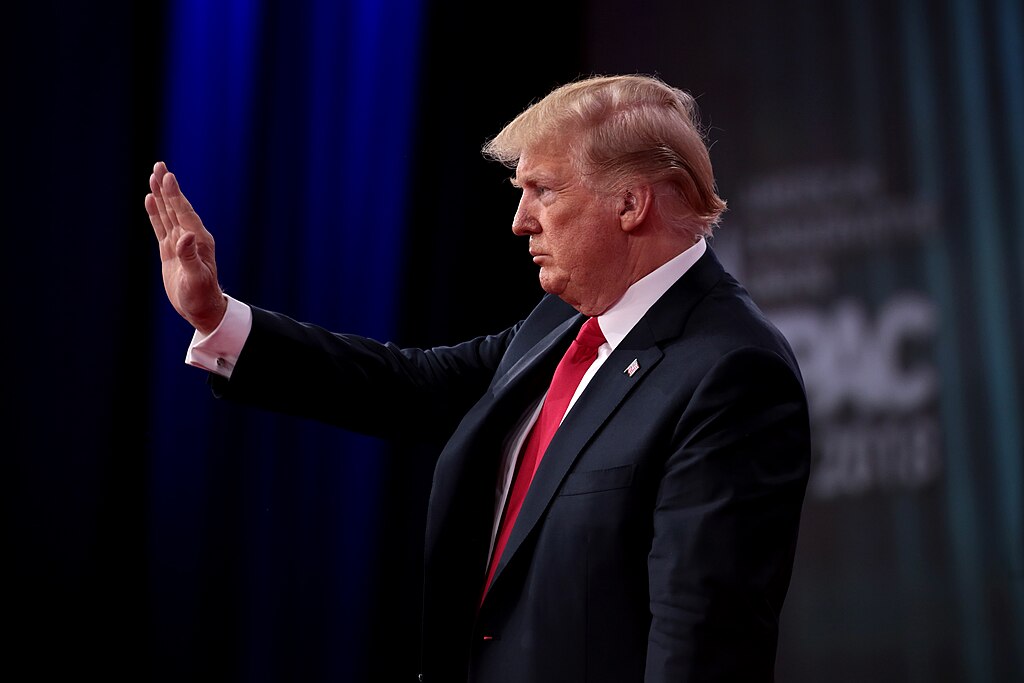President-elect Donald Trump secured the presidency with 312 electoral votes, despite falling short of a popular vote majority, according to final election tallies. Trump garnered 77,297,721 votes, equating to 49.91% of the national vote. In contrast, non-Trump candidates collectively amassed 77,578,055 votes or 50.09%, raising questions about the dynamics of the U.S. electoral system.
Trump Wins Electoral College While Losing Popular Vote
Trump, representing the Republican Party, defeated Democratic candidate Kamala Harris, who secured 226 electoral votes with 75,009,338 votes, accounting for 48.4% of the popular vote. Third-party candidates, including Jill Stein of the Green Party, independent Robert Kennedy, and Libertarian Chase Oliver, collectively captured 1.9% of the vote but failed to win any electoral votes.
This marks another instance in U.S. history where a candidate achieved an electoral college victory without winning the popular vote. Analysts point to the structure of the electoral college system, which emphasizes state-level outcomes over national totals, as a key factor in this outcome.
Public Reaction to the Results
The final count has sparked widespread debate online. Twitter user @ElectionWatcher posted, "The electoral college undermines democracy. How can the majority vote against Trump, yet he still wins?" Meanwhile, @IndependentVoterUSA commented, "Third-party votes matter. Blaming non-Trump votes ignores the real issue—our outdated electoral system." User @DemocracyAdvocate added, "This is why we need to abolish the electoral college. Popular votes should determine our leaders."
Conversely, @AmericaFirst2024 defended the system, tweeting, "The electoral college ensures all states have a voice, not just large population centers." Another user, @FairVoteNow, wrote, "Blaming the electoral system is lazy. Campaign strategies focus on winning under existing rules." Lastly, @CivicEngagementNow observed, "This outcome highlights the need for voters to understand the electoral college's role in presidential elections."
A Broader Look at the Numbers
Beyond Trump and Harris, third-party candidates Jill Stein, Robert Kennedy, and Chase Oliver received 0.5%, 0.5%, and 0.4% of the vote, respectively. "Other candidates" collectively obtained 0.3%. While these votes represent a small fraction of the electorate, they illustrate a desire for alternatives beyond the two dominant parties.
Implications for the U.S. Electoral System
The divergence between the popular vote and the electoral outcome reignites debates about the efficacy and fairness of the electoral college. Advocates for reform argue that the system disproportionately favors smaller states and undermines the principle of one person, one vote. Critics of reform contend that it protects the federalist principles upon which the U.S. was founded.
As Trump prepares to take office, discussions about electoral reform are likely to persist. Meanwhile, the final results highlight the complexities of a system designed over two centuries ago.



 Trump Signs Order to Ease Federal Marijuana Rules, Signaling Major Policy Shift
Trump Signs Order to Ease Federal Marijuana Rules, Signaling Major Policy Shift  U.S. House Advances GOP Healthcare Bill as ACA Subsidies Near Expiration
U.S. House Advances GOP Healthcare Bill as ACA Subsidies Near Expiration  Trump Expands U.S. Travel Ban to Antigua and Barbuda, Dominica, Sparking Economic Fears in the Caribbean
Trump Expands U.S. Travel Ban to Antigua and Barbuda, Dominica, Sparking Economic Fears in the Caribbean  Italy Supreme Court Upholds Salvini Acquittal in Migrant Kidnapping Case
Italy Supreme Court Upholds Salvini Acquittal in Migrant Kidnapping Case  Canada Signals Delay in US Tariff Deal as Talks Shift to USMCA Review
Canada Signals Delay in US Tariff Deal as Talks Shift to USMCA Review  Venezuela Seeks UN Security Council Meeting Over U.S. Oil Tanker Blockade
Venezuela Seeks UN Security Council Meeting Over U.S. Oil Tanker Blockade  NSW to Recall Parliament for Urgent Gun and Protest Law Reforms After Bondi Beach Shooting
NSW to Recall Parliament for Urgent Gun and Protest Law Reforms After Bondi Beach Shooting  U.S.-Russia Talks in Miami Raise Hopes for Potential Ukraine War Deal
U.S.-Russia Talks in Miami Raise Hopes for Potential Ukraine War Deal  Fernando Haddad Confirms He Will Not Run for Office in 2025, Signals Possible Exit as Brazil’s Finance Minister
Fernando Haddad Confirms He Will Not Run for Office in 2025, Signals Possible Exit as Brazil’s Finance Minister  Barham Salih Elected as Next UN High Commissioner for Refugees
Barham Salih Elected as Next UN High Commissioner for Refugees  Trump Orders Blockade of Sanctioned Oil Tankers, Raising Venezuela Tensions and Oil Prices
Trump Orders Blockade of Sanctioned Oil Tankers, Raising Venezuela Tensions and Oil Prices  Jared Isaacman Confirmed as NASA Administrator, Becomes 15th Leader of U.S. Space Agency
Jared Isaacman Confirmed as NASA Administrator, Becomes 15th Leader of U.S. Space Agency  UN Warns Gaza Humanitarian Aid at Risk as Israel Registration Rules Threaten NGO Operations
UN Warns Gaza Humanitarian Aid at Risk as Israel Registration Rules Threaten NGO Operations  Trump Signals Progress in Ukraine Peace Talks Ahead of U.S.–Russia Meeting
Trump Signals Progress in Ukraine Peace Talks Ahead of U.S.–Russia Meeting  U.S. Initiates $11.1 Billion Arms Sale to Taiwan Amid Rising China Tensions
U.S. Initiates $11.1 Billion Arms Sale to Taiwan Amid Rising China Tensions  Dan Bongino to Step Down as FBI Deputy Director After Brief, Controversial Tenure
Dan Bongino to Step Down as FBI Deputy Director After Brief, Controversial Tenure  Trump Administration Reviews Nvidia H200 Chip Sales to China, Marking Major Shift in U.S. AI Export Policy
Trump Administration Reviews Nvidia H200 Chip Sales to China, Marking Major Shift in U.S. AI Export Policy 

























